 | « Back to article | Print this article |
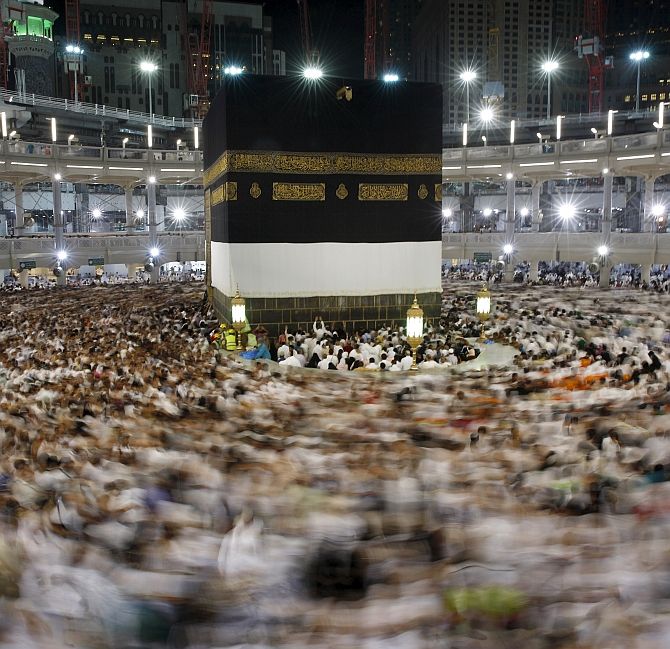
Over 1.5 lakh Indians along with tens of thousands of Muslims from across the world began moving from the holy city of Mecca to nearby tent-city of Mina, marking the beginning of the annual Haj pilgrimage. Seen in the image, above, are pilgrims praying around the holy Kaaba at the Grand Mosque.
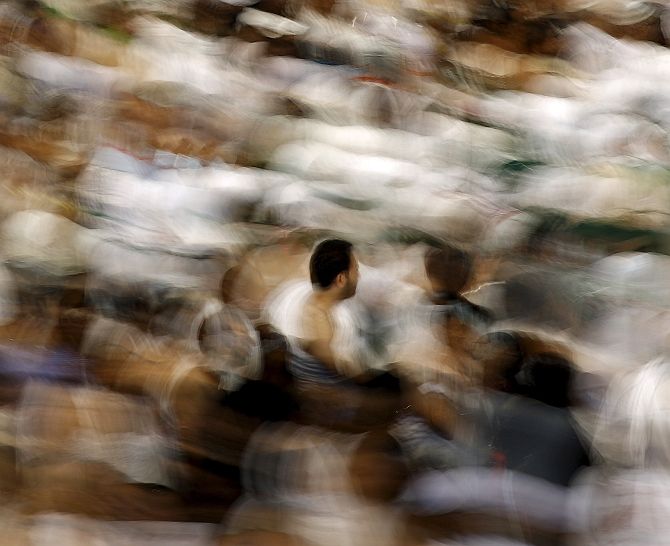
Chanting 'Labbaik Allahumma Labbaik' (I come to you, Oh my Lord, I come to you), pilgrims clad in white seamless cloth began moving to the tent-city Mina in groups. Seen in the image, above, are pilgrims praying around the holy Kaaba at the Grand Mosque.
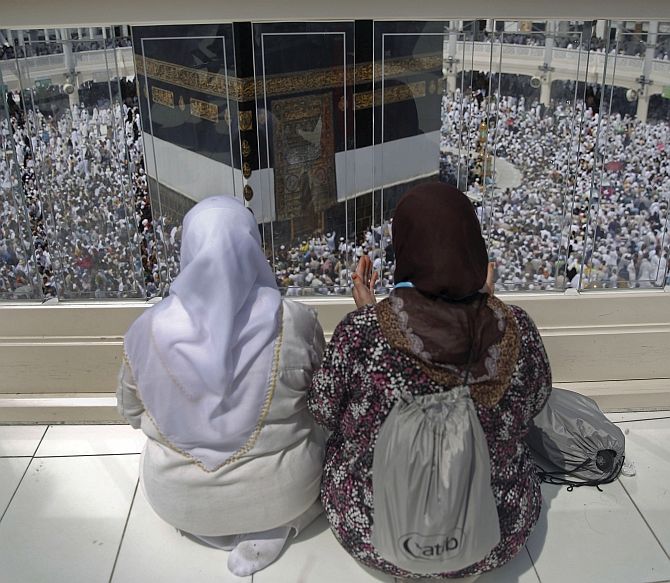
During Haj, men pilgrims wear a seamless two-piece white garment, symbolising a state of purity. Women also generally wear white, covering full body except their faces and hands. Seen in the image, above, are pilgrims praying around the holy Kaaba at the Grand Mosque.
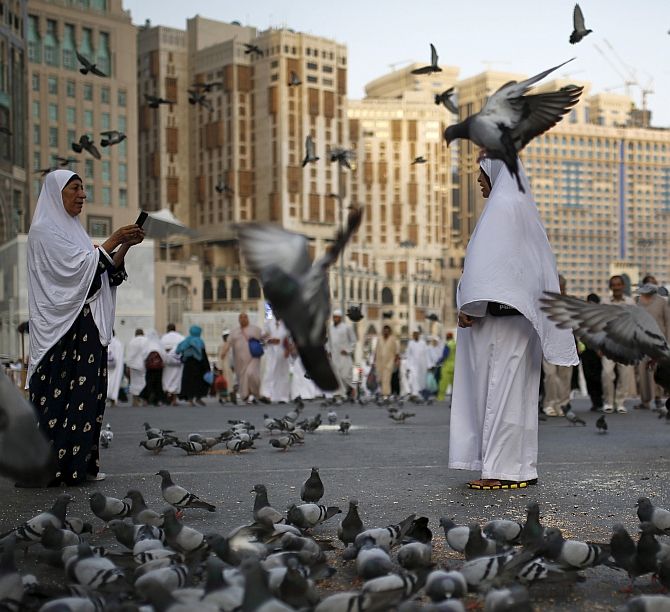
While a significant number of pilgrims started the nearly five kilometre journey from Mecca to Mina on Monday night, most of the pilgrims began soon after pre-dawn prayers on Tuesday. Seen in the image, above, are pilgrims taking pictures while standing amongst pigeons outside the Grand mosque.
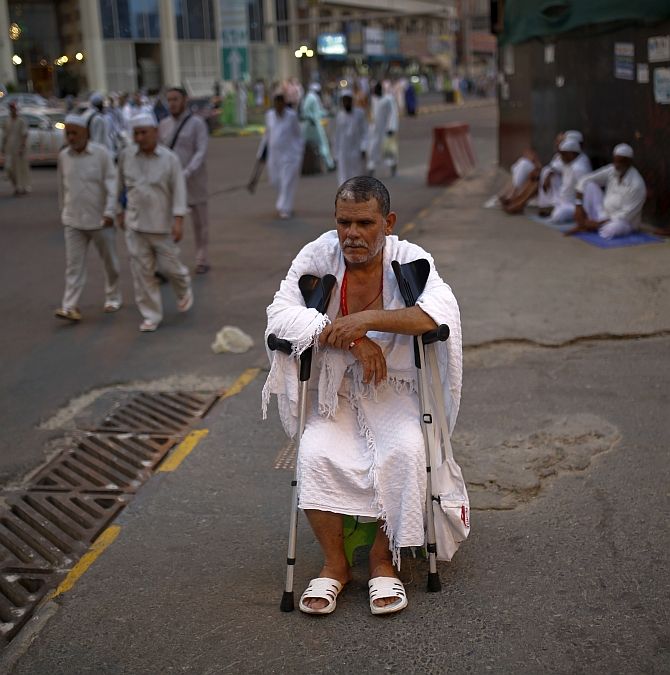
Most pilgrims embarked on the journey on board buses arranged by their respective Haj missions and the Saudi government but some others preferred moving on foot. Some pilgrims were seen in wheelchairs also. Seen in the image, above, is a pilgrim taking a break as he heads to the Grand Mosque
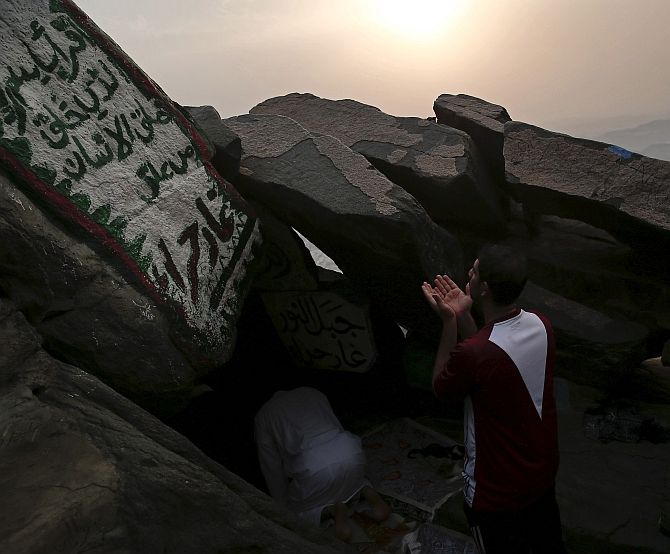
Emotional scenes were witnessed in Mina as on arrival many pilgrims could not control tears and many continued to thank Allah for making it possible for them to perform Haj. The pilgrims will spend the night in Mina reciting the Holy Quran or praying before heading to Mount Arafat. Seen in the image, above, is a pilgrim praying near the Hera cave, where Muslims believe Prophet Mohammad received the first words of the Koran through Gabriel, at the top of Mount Al-Noor.
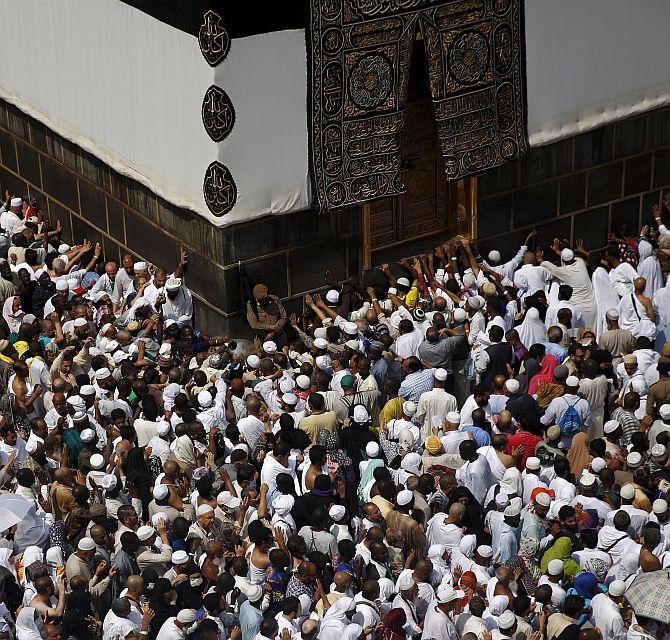
There are 160,000 fire-proof tents in Mina to accommodate pilgrims. Fire safety measures are in place with an integrated network of water pipes running throughout the Mina valley. After offering prayers at Arafat, pilgrims will travel to nearby Muzdalifa to collect stones for the ritual in MinaValley, an event which has been marred in the past by stampedes. The next day the pilgrims will perform the symbolic stoning of the devil by throwing stones at the three pillars. Seen in the image, above, are pilgrims praying around the holy Kaaba.
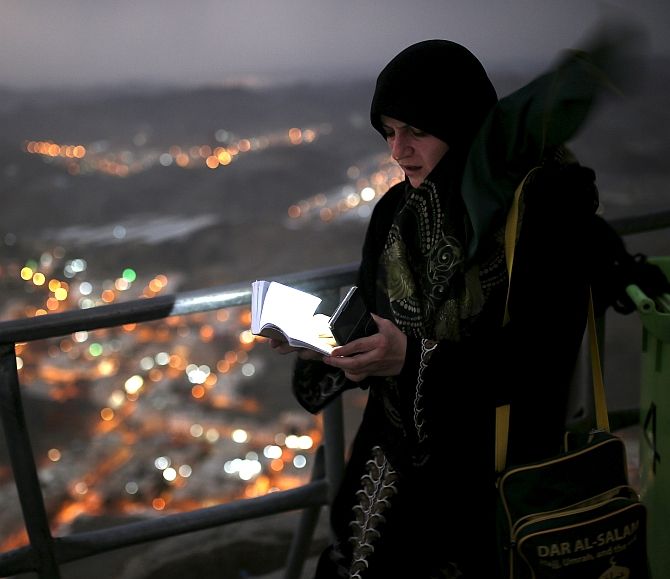
After the stoning, the pilgrims will perform the ritual of animal sacrifice to commemorate Prophet Ibrahim's willingness to sacrifice his only son, Ismail, to God. The stoning ritual is meant to mirror Ibrahim's stoning of the devil when he appeared to try to dissuade the Prophet from obeying God's order to sacrifice Ismail. The pilgrimage will end after Eid al-Adha, or the Feast of Sacrifice. Seen in the image, above, is a pilgrim using her mobile phone to light up as she reads from the Quran after visiting Hera cave, where Muslims believe Prophet Mohammad received the first words of the Koran through Gabriel, at the top of Mount Al-Noor
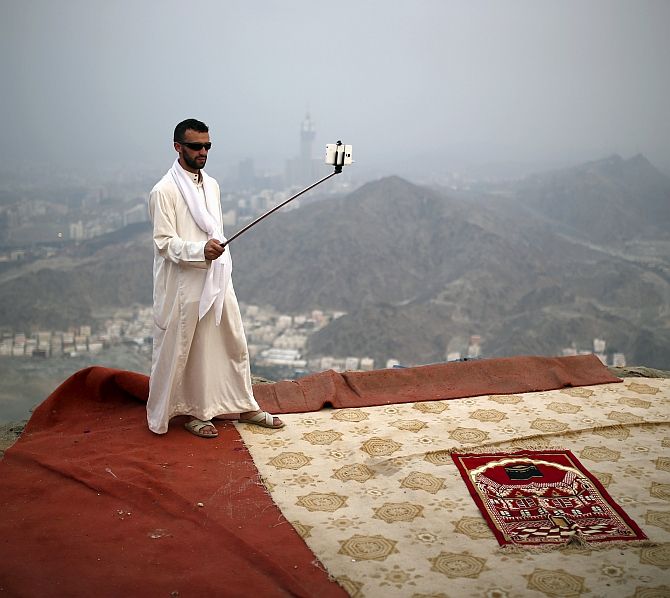
The Saudi government has arranged foolproof safety and security measures, deploying nearly 100,000 men in uniform at the holy sites to make the journey of a lifetime for the two million pilgrims safe and secure. Saudi government officials said a total of 13,74,206 foreign pilgrims have arrived for Haj this year. The pilgrimage is one of the five pillars of Islam that should be performed at least once in lifetime by every Muslim who is financially and physically capable. Seen in the image, above, is a pilgrim using a selfie stick to take pictures atop Mount Thor in the holy city of Mecca
All Photographs: Ahmad Masood/Reuters